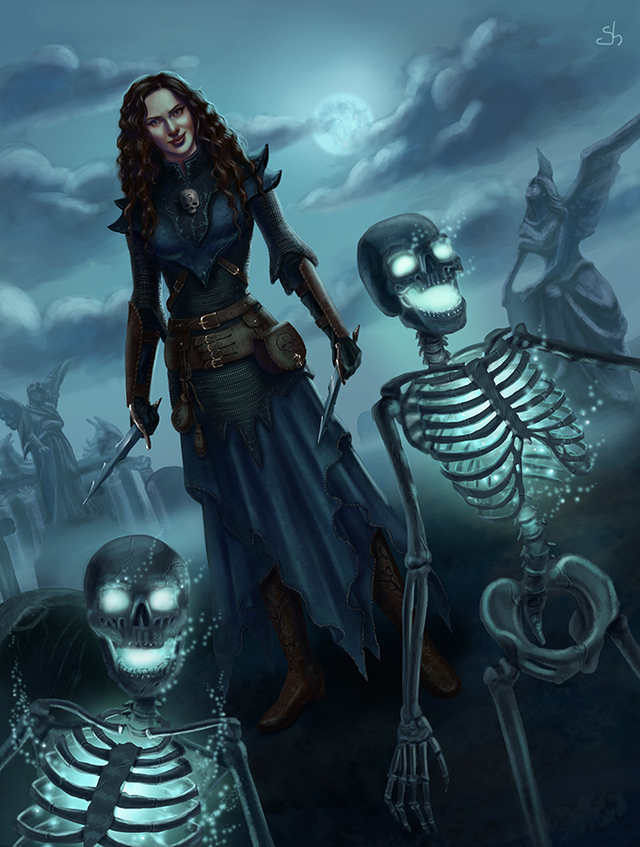
Art from
Shade-of-Stars
Necromancer
"We are a legion"
- The Death Tyrant
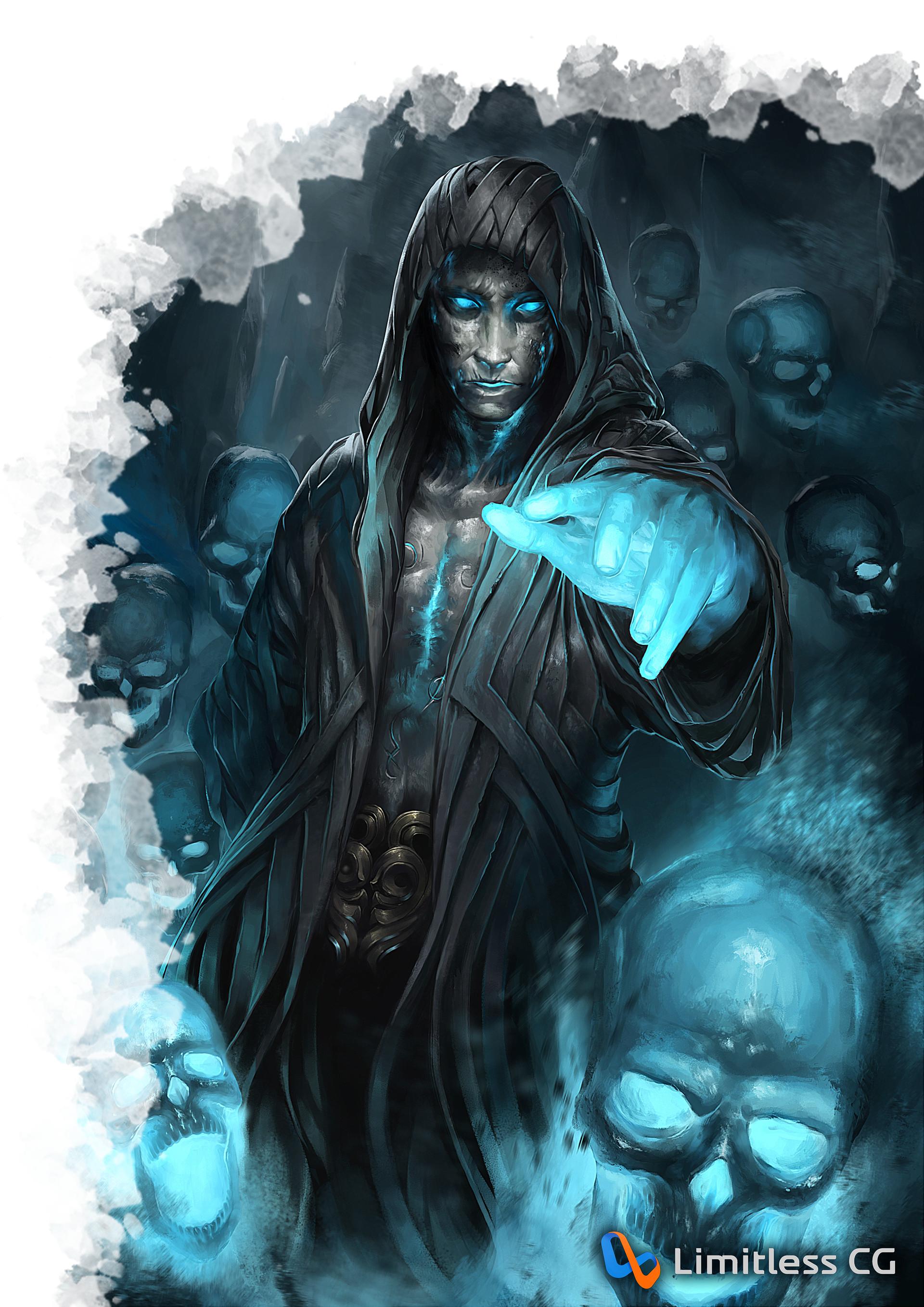
Art from
amirul hhf

Contents
-
4Necromancer
-
13Xanathar's Guide to Everything
- 14Necromancer
- 16Doctrine of the Reaper
- 17Doctrine of Shamanism
- 17Doctrine of the Occult
- Coming SoonAdditional Spell Lists
Credits
Written by /u/Enderlook and /u/Enderluck (Discord Enderlook#6517 and Enderluck#8624).
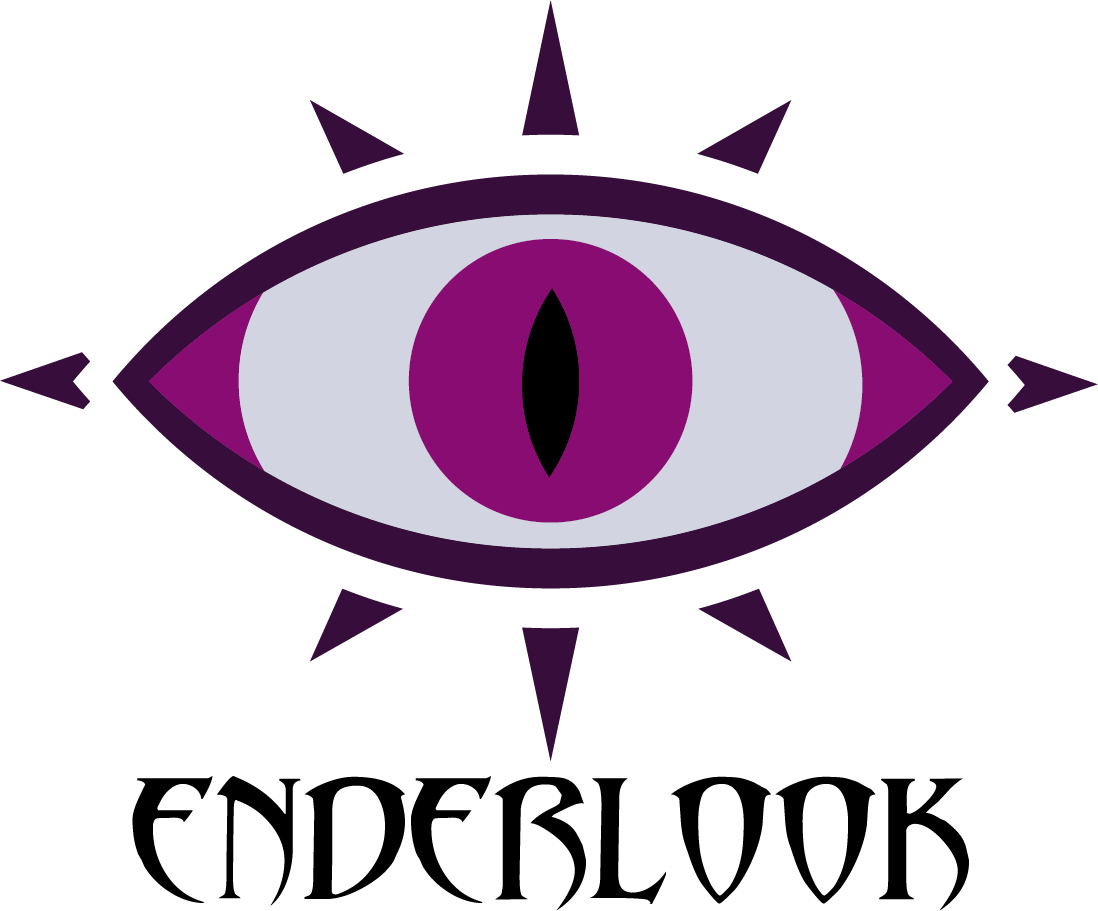
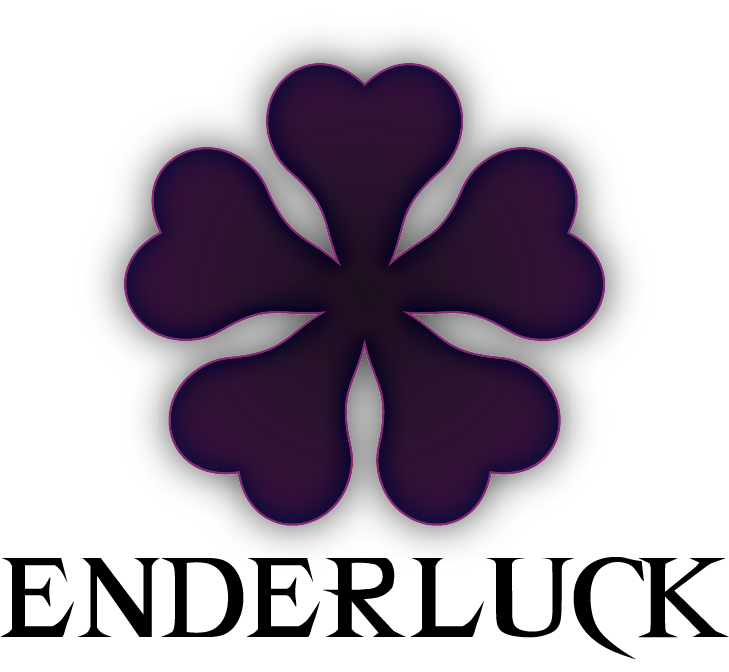
Necromancer
Clad with a black a robe, a human walks in what just moments ago was a bloody battle. With a dagger in one hand and a scepter in the other, he approaches the wounded who beg for help and ends each one of them. He then searches for bodies that seemed stronger and gives them a second chance, as part of his undead army.
Under the moonlight, an elf sneaks into the village cemetery. With a bouquet of flowers in his hand and the wedding ring of his beloved, he goes to the grave where she rests in peace. With one hand he leaves the flowers, and with the other he touches the stone, from which one hand takes the flowers and gently caresses the elf.
A dwarf kneels before the body of his brother in arms. Crying, he pleads with the goddess Berronar to save her friend. Out of the shadows comes a halfling with mysterious clothes. The halfling approaches and kneels beside the body. Suddenly the dead dwarf breathes again.
Necromancers channel the power of life and death. A natural ability to manipulate the vital essences that flow in each living being is what drives each necromancer to perform terrible or honorable actions.
An Inner Talent
Sometimes, an unexperienced necromancer may misunderstood its ability with the power of a sorcerer. Both of them wield their power as an innate ability, but while sorcerer harness their own inborn magic, necromancers has the ability to harness and manipulate the vital essence that move any living creature to use it at their advantage.
Whenever mad wizards who pursuit the eternal life, blessed priest of gods of life or gifted sorcerers with an unique talent, necromancers aim to achieve their goal by weaving the very core of life.
A Predictable Misconception
Contrary to popular belief, necromancer are not necessary evil creatures, not seek to subjugate others. In fact, some of them seek to use their powers for the good. A poor understanding of their skills as well the frightening power of the undead has simply produced a misconception of their image to the common folk.
Necromancers are rare in the world, and so the story of one evil necromancer taking over a city with a hoard of zombies may spread very quickly, while the story of gifted men with ability to heal the badly injured may pass unnoticed.
Creating a Necromancer
The most important question to consider when creating your necromancer is how did you come in contact with this new power and why do you use it: Were you a young sorcerer who discovered their talent for manipulating life essence was their true power? Did you form part of a demon-worshipping cult where you were teached with the art of harnessing life essence? Or perhaps the source of your talent is unknown and mysterious, and one day you almost die when you discover this new power? Also you must determine how your character appeal necromancy: Is it simply the pleasure of control of life, or did you lose a loved one and could not face your inability to prevent its death?
Quick Build
You can make the necromancer quickly by following these suggestions. First, Intelligence should be your highest ability score, followed by Constitution. Second, choose the Acolyte, Hermit or Sage background. Third, choose the cantrips chill touch and thaumaturgy, and the 1st-level spells cure wounds and witch bolt.
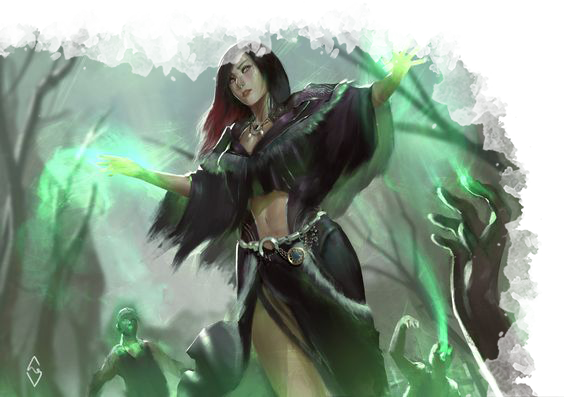
Art from
Fahmi Fauzi
Necromancer
| Level | Proficiency Bonus | Vitality Dices | Features | Cantrips Known | Spells Known | Spell Slots | Slot Level |
|---|---|---|---|---|---|---|---|
| 1st | +2 | - | Dark Magic, Raise Undead | 2 | 2 | 1 | 1st |
| 2nd | +2 | 2d6 | Vitality Flow | 2 | 3 | 2 | 1st |
| 3rd | +2 | 3d6 | Necromancy Doctrine | 2 | 4 | 2 | 2nd |
| 4th | +2 | 4d6 | Ability Score Improvement | 3 | 5 | 2 | 2nd |
| 5th | +3 | 5d8 | 3 | 6 | 2 | 3rd | |
| 6th | +3 | 6d8 | Necromancy Doctrine Feature | 3 | 7 | 2 | 3rd |
| 7th | +3 | 7d8 | 3 | 8 | 2 | 4th | |
| 8th | +3 | 8d8 | Ability Score Improvement | 3 | 9 | 2 | 4th |
| 9th | +4 | 9d8 | 3 | 9 | 2 | 5th | |
| 10th | +4 | 10d10 | Necromancy Doctrine Feature | 4 | 10 | 2 | 5th |
| 11th | +4 | 11d10 | Forbidden Magic (6th level) | 4 | 11 | 3 | 5th |
| 12th | +4 | 12d10 | 4 | 11 | 3 | 5th | |
| 13th | +5 | 13d10 | Forbidden Magic (7th level) | 4 | 12 | 3 | 5th |
| 14th | +5 | 14d10 | Necromancy Doctrine Feature | 4 | 12 | 3 | 5th |
| 15th | +5 | 15d12 | Forbidden Magic (8th level) | 4 | 13 | 3 | 5th |
| 16th | +5 | 16d12 | Ability Score Improvement | 4 | 13 | 3 | 5th |
| 17th | +6 | 17d12 | Forbidden Magic (9th level) | 4 | 14 | 4 | 5th |
| 18th | +6 | 18d12 | Undying Nature | 4 | 14 | 4 | 5th |
| 19th | +6 | 19d12 | Ability Score Improvement | 4 | 15 | 4 | 5th |
| 20th | +6 | 20d12 | Necromancy Doctrine Feature | 4 | 15 | 4 | 5th |
Class Features
As a necromancer, you gain the following class features
Hit Points
- Hit Dice: 1d6 per necromancer level
- Hit Points at 1st Level: 6 + your Constitution modifier
- Hit Points at Higher Levels: 1d6 (or 4) + your Constitution modifier per necromancer level after 1st.
Proficiencies
- Armor: None
- Weapons: Daggers, Darts, Sickles, Quarterstaffs
- Tools: None
- Saving Throws: Constitution and Intelligence
- Skills: Choose two from Arcana, Deception, History, Investigation, Medicine, and Religion.
Equipment
You start with the following equipment, in addition to the equipment granted by your background:
- (a) a quarterstaff or (b) a sickle
- (a) a component pouch or (b) an arcane focus
- (a) a priest’s pack or (b) a scholar’s pack
Alternatively, you can choose to start with 4d4 x 10 gp and opt to spend some or all of that money on starting equipment.
Dark Magic
As a necromancer, your ability to manipulate the life essence of living beings is a natural talent for you. However this technique is enhanced by studying spells and the arcane arts.
See chapter 10 of the official player handbook for the general rules of spellcasting and the end of this document for the necromancer spell list.
Cantrips
You know two cantrips of your choice from the necromancer spell list. You learn additional necromancer cantrips of your choice at higher levels, as shown in the Cantrips Known column of the necromancer table.
The Black Plague
A rare disease transmitted by rotten corpses. Until the creature is cured, the afflicted loses 1d6 maximum hit points per day as its flesh rots apart. On death, the creature raise as a zombie.
Spell Slots
The Necromancer table shows how many spell slots you have to cast your necromancer spells of 1st through 5th level. The table also shows what the level of those slots is; all of your spell slots are the same level. To cast one of your necromancer spells of 1st level or higher, you must expend a spell slot. You regain all expended spell slots when you finish a short or long rest.
For example, when you are 5th level, you have two 3rd-level spell slots. To cast the 1st-level spell witch bolt, you must spend one of those slots, and you cast it as a 3rd-level spell.
Spells Known of 1st Level and Higher
At 1st level, you know two 1st-level spells of your choice from the necromancer spell list.
The Spells Known column of the Necromancer table shows when you learn more necromancer spells of your choice of 1st level and higher. A spell you choose must be of a level no higher than what’s shown in the table’s Slot Level column for your level. When you reach 6th level, for example, you learn a new necromancer spell, which can be 1st, 2nd, or 3rd level.
Additionally, when you gain a level in this class, you can choose one of the necromancer spells you know and replace it with another spell from the warlock spell list, which also must be of a level for which you have spell slots.
Spellcasting Ability
Intelligence is your spellcasting ability for your warlock spells, so you use your Intelligence whenever a spell refers to your spellcasting ability. In addition, you use your Intelligence modifier when setting the saving throw DC for a necromancer spell you cast and when making an attack roll with one.
Spell Save DC
Spell attack modifier
Spellcasting Focus
You can use an arcane focus (found in PHB chapter 5) as a spellcasting focus for your necromancer spells.
Raise Undead
At 1st level, you have the ability to imbue life to a corpse, raising it as an undead creature.
You can use your action to touch the corpse of any dead creature that is one of the following types: aberration, beast, humanoid, monstrosity, plant or undead. The creature can be no bigger than medium size and the CR can be no higher than the Max. CR column listed in the Raise Undead table from below.
After a minute, the creature raise as an Undead Minion with the following traits:
- It becomes an Undead, and gains immunity to poison damage.
- It cannot cast spells, nor use abilities that summon other creatures.
You can control an amount of creatures no higher than the listed in the Max. Amount column in the Raise Undead table.
Raise Undead
| N. Level | Max. CR | Max. Amount |
|---|---|---|
| 1st | 1/4 | 2 |
| 3rd | 1/4 | 3 |
| 5th | 1/2 | 3 |
| 6th | 1/2 | 4 |
| 9th | 1 | 4 |
| N. Level | Max. CR | Max. Amount |
|---|---|---|
| 12th | 1 | 5 |
| 13th | 2 | 5 |
| 17th | 2 | 6 |
| 18th | 3 | 6 |
| 20th | 3 | ∞ |
As a bonus action, you can mentally command any of your Undead Minion within 120 feet of you (if you control multiple creatures, you can command any or all of them at the same time, issuing the same command to each one). You decide what action the creature will take and where it will move during its next turn, or you can issue a general command, such as to guard a particular chamber or corridor. If you issue no commands, the creature only defends itself and you against hostile creatures. Once given an order, the creature continues to follow it until its task is complete. It regards you and those not hostile to you as allies.
Additionally, at any moment, you can willingly decide to destroy your Undead Minion.
If the target corpse cannot be raised (due to effect such as the gentle repose spell), the use is spent and the ability fails, though you are made aware of the fact that the corpse cannot be raised.
You can use this feature a number of times equal to your Intelligence modifier (minimum once). When you finish a long rest, you regain all expended uses.
Vitality Flow
At 2nd level, you learn how to withdraw the life force that flow in each living being. Your capability to manipulate this energy is represented by a pool of d6s that you spend to fuel some of your abilities. Your necromancer level determines the number of points you can have, as shown in the Vitality Dices column of the Necromancer table.
You can spend these dices to fuel various of your features. Other features can recover spent dices. You start knowing two features: Vitality Withdrawal and Vitality Infusion.
You recover all your spent vitality points after a long rest.
Your Vitality Flow die changes when you reach certain levels in this class. The die becomes a d8 at 5th level, a d10 at 10th level, and a d12 at 15th level.
Vitality Withdrawal
When a creature die in 120 feet, you can spend your reaction to withdraw the remains of its life force and store them in your body. You regain the creature CR (or class level if the creature has) in vitality dices, rounded up.
Black-Skinned Death
Creatures sick by this diseases can't restore hit point by any non-magical means and gain the Sunlight Sensitivity trait. At the 7th day, they die.
Vitality Infusion
As a bonus action, you can heal one creature you can see within 60 feet of you, spending dice from the pool. The maximum number of dice you can spend at once equals your Intelligence modifier (minimum of one die). Roll the dice you spend, add them together, and restore a number of hit points equal to the total.
Necromancy Doctrine
At 3rd level, you learn more serious ways of manipulating life and death. This opens your mind to different necromancy doctrines and forces you think about how are you going to use this new power. Choose one of the necromantic doctrines listed at then end of the class description. These Styles give you features at 3rd level and again at 6th, 10th, 14th and 20th levels. Those features the includes doctrine spells.
Doctrine Spells
Each doctrine has a list of associated spells. You gain access to these spells at the levels specified in the doctrine description. Once you gain access to an doctrine spell, you learn it. Doctrine spells don’t count against the number of spells you can known.
If you gain a doctrine spell that doesn’t appear on the necromancer spell list, the spell is nonetheless a necromancer spell for you.
Ability Score Improvement
When you reach 4th level, and again at 8th, 12th, 16th, and 19th level, you can increase one ability score of your choice by 2, or you can increase two ability scores of your choice by 1. As normal, you can’t increase an ability score above 20 using this feature.
Using the optional feats rule, you can forgo taking this feature to take a feat of your choice instead.
Forbidden Magic
At 11th level, you discover a magical and forbidden power. Choose one 6th-level spell from the necromancer spell list as this forbidden magic.
You can cast your forbidden magic once without expending a spell slot. You must finish a long rest before you can do so again.
At higher levels, you gain more necromancer spells of your choice that can be cast in this way: one 7th-level spell at 13th level, one 8th-level spell at 15th level, and one 9th-level spell at 17th level. You regain all uses of your Forbidden Magic when you finish a long rest.
Undying Nature
Beginning at 18th level, you can hold your breath indefinitely, and you don't require food, water, or sleep, although you still require rest to reduce exhaustion and still benefit from finishing short and long rests.
In addition, you age at a slower rate. For every 10 years that pass, your body ages only 1 year, and you are immune to being magically aged.
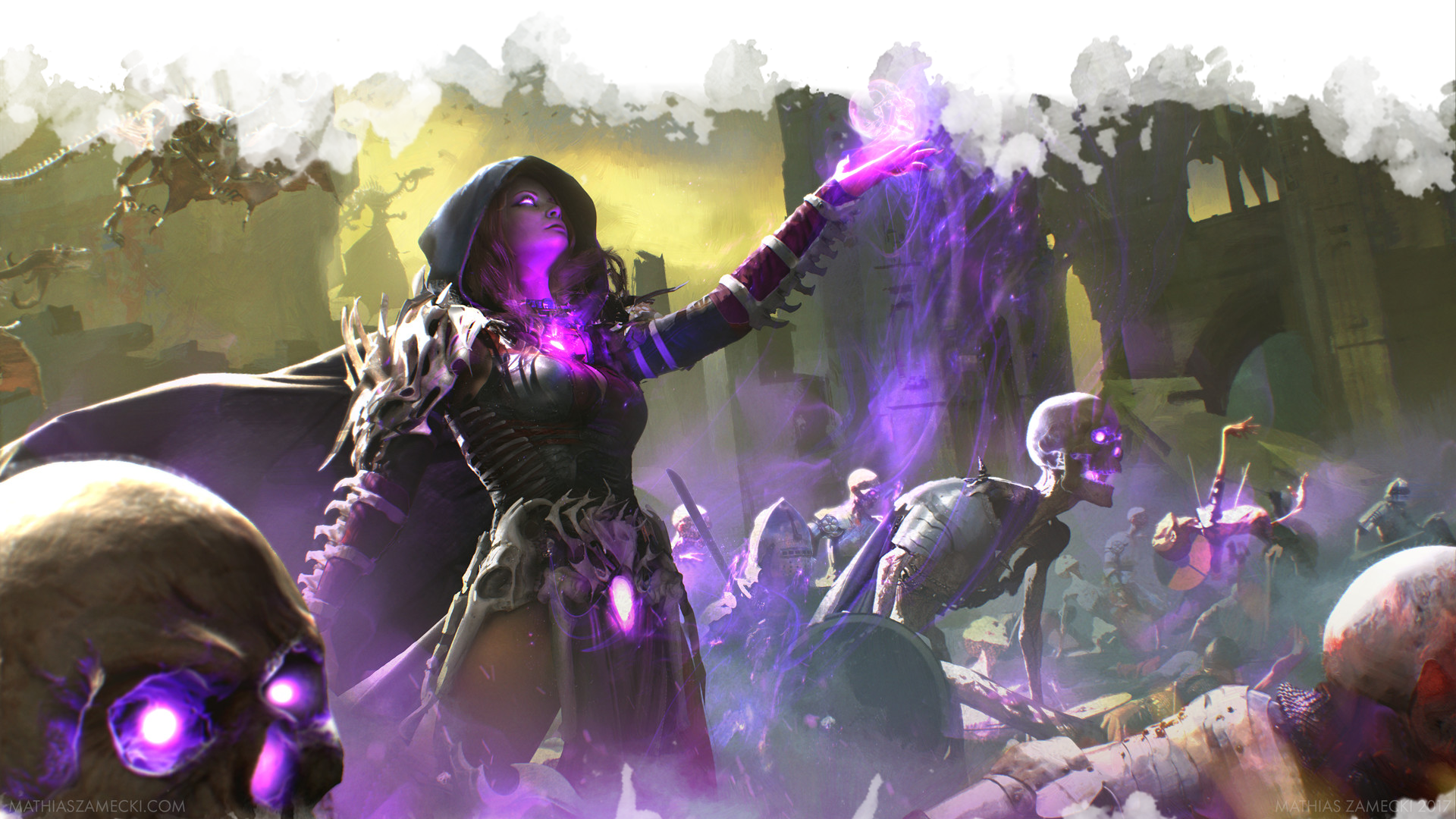
Art from Mathias Zamęcki
Necromantic Doctrine
Although the principle to alter the essence of life in every necromance is always the same, the practitioners of this skill dedicate their training to their own way. This occurs through adherement to a certain doctrine of necromancy. Depending on the lands where the necromancers travel, the doctrines can range from simple ideologies that a necromancer decides to adhere to, to complex hidden organizations that manifest themselves at night.
Doctrine of the Undertaker
The Doctrine of the Undertaker could be said to be the best known by the common people. Its sole purpose is the raising of the undead. In this doctrine, necromancers leave their training behind, and spend all their time mastering the ability to raise and create hordes of undead. For this same reason, their necromancers are often physically weak and of little speech, since they spend their entire lives surrounded by the dead.
Undertaker Doctrine Spells
| Necromancer Level | Spells |
|---|---|
| 3rd | ray of sickness, cloud of daggers |
| 5th | animate dead |
| 7th | blight |
| 9th | antilife shell |
Among the Dead
At 3rd level, undead have difficulty harming you. If an undead targets you directly with an attack or a harmful spell, that creature must make a Wisdom saving throw against your spell save DC (an undead needn't make the save when it includes you in an area effect, such as the explosion of Fireball). On a failed save, the creature must choose a new target or forfeit targeting someone instead of you, potentially wasting the attack or spell. On a successful save, the creature is immune to this effect for 24 hours. An undead is also immune to this effect for 24 hours if you target it with an attack or a harmful spell.
Undead Transference
Also starting at 3rd level, you gain the ability to heal the undead through the sacrifice of others. As an action, you choose two undead creatures in 60 feet and transfer the life of one to the other. An unwilling creature must succeed a Constitution saving throw equal to your spell save DC. You can roll up to half your necromancer level in d6 dices, add them together, and reduce the number of hit points from the first undead equal to the total. Then, the second undead restore the same amount of hit points.
You can use this feature a number of times equal to your intelligence modifier (minimum of one charge). When you finish a long rest, you regain all expended uses.
Undead Reconstruction
At 6th level, you gain the ability to heal the undead with greater proficiency. Whenever you target an undead with the Vitality Infusion feature, you do not roll the dices you spent, you instead use the highest number possible for each die.
Undead Style
At 10th level, your talent raising undead is unquestionable. You gain one of the following features of your choice, which apply to any undead raised by you, even from spells:
Adept Animator
Whenever you take your action to raise an undead from any mean, it does immediately. Additionally, the creature adds your proficiency bonus to its weapon damage rolls.
Colossal Animator
You become able to create undeads out of corpses of large and huge-sized creatures, as well as out of creatures of the celestial, dragon, fey, fiend and giant types. Additionally, creature's hit point maximum is increased by an amount equal to your necromancer level.
Spontaneous Animator
You become able to raise the dead with ease. You can raise undeads with no corpse. When you do so, the creature comes out of the depths of the earth. If you use your Raise Undead feature, you can choose any of the following creatures provided its CR is no higher than the Max. CR column of the Raise Undead table: skeleton, zombie, shadow, ghoul, ghast, minotaur skeleton, ogre zombie, wight. Your DM has their stats in the Monster Manual.
Turn Dead
At 14th level, you learn how to destroy another creature's life force. As an action, any creature you choose within 30 feet must make a Constitution saving throw. On fail, the creature takes necrotic damage equal to 5d10 necrotic damage and reduce it maximum hit points by the same amount until a short or long rest.
Once you use this feature, you can not use it again until you finish a long rest.
Death Tyrant
At 20th level, you choose an additional Undead Style from the Undead Style feature. Additionally, when you cast an spell, you can choose any amount of undead creatures in a 60-foot range centered on you, the creatures recover the double of the spell level in hit points.
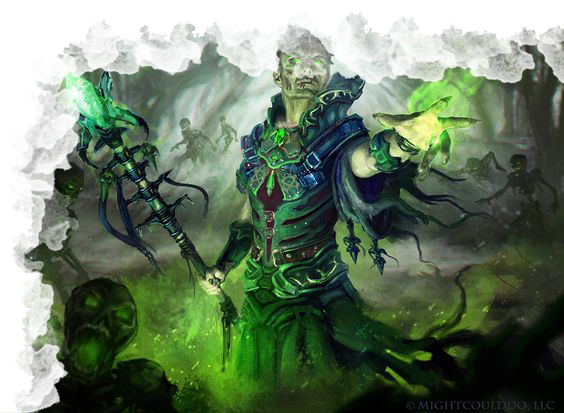
Art from JoshCalloway
Doctrine of Siphoning
If manipulation of the life force is a skill, the Doctrine of Siphoning has made it an art. The necromancers of this doctrine, devote all their efforts to perfect the technique, and use it to be able to manipulate the life force of others at their will. Some siphons decide to learn the art of the sword to get closer to the source of life, others perfect their spells to steal life force from a safe distance.
Siphoning Doctrine Spells
| Necromancer Level | Spells |
|---|---|
| 3rd | witch bolt, shadow blade |
| 5th | vampiric touch |
| 7th | evard's black tentacles |
| 9th | enervation |
Unholy Recovery
Starting at 3rd level, you gain the ability to consume up to the last drop of life from a corpse. As an action, you can touch a corpse or an undead creature. The creature takes 1d8 + your necromancer level in hit points and you restore the same amount in hit points. A creature which hit points drops to 0 become fine dust. A corpse always becomes fine dust.
Whenever you use this feature on an unwilling creature, make a melee spell attack, on a hit the feature takes place.
You can use this feature a number of times equal to your intelligence modifier (minimum of one charge). When you finish a long rest, you regain all expended uses.
Dark Mastery
At 6th level, you have obtained a greater control of the life force of living beings. Whenever you deal necrotic damage, you automatically gain temporary hit points equal to half the necrotic damage dealt, rounded down.
Additionally, you gain proficiency with light and medium armor, and three weapons of your choice, and whenever you deal damage with a weapon attack or any necromancer spell, you can choose to change the damage dealt to be necrotic type.
Proficent Leech
At 10th level, you master new methods to siphon the life from your enemies.
As a bonus action, you can choose a creature you can see within 30 feet of you. For 1 minute or until your concentration ends (as if you were concentrating on a spell) the creature is marked. The mark ends if the target is ever outside the 30-foot range or if it has total cover from you.
Once you use this feature, you can not use it again until you finish a short or long rest. Each necromancer has its own mark. Choose one of the following features of your choice.
Siphon Strength
The marked creature speed is reduced by 10 feet and at the beginning of each of its turns, it must succeed on a Constitution saving throw o take 4d10 necrotic damage and suffer one level of exhaustion.
Any level of exhaustion caused by this feature go away the mark ends.
Life Drain
Whenever the marked creature takes damage, you regain hit points equal to half the amount of hit points lost by the target. Additionally, you gains advantage on melee weapon attacks against the target.
Bestow Life
At 14th level, you learn how to bring back to life the recently deceased. As an action, you touch the corpse of a creature who died within the last 24 hours. The creature bring back to life with 2d10 hit points and the target suffers from a level of exhaustion (as described in PHB appendix A).
Once you use this feature, you can not use it again until you finish a long rest.
Everlasting
At 20th level, killing you becomes a challenging task. When you are reduced to 0 hit points, you can expend and roll 1 vitality dice (no action required) and drop to a number of hit points equals to the rolled number instead.
Insomnia Killer
The rare symptoms of this disease make unable creatures to rest, as grotesque nightmares traumatize their victims.
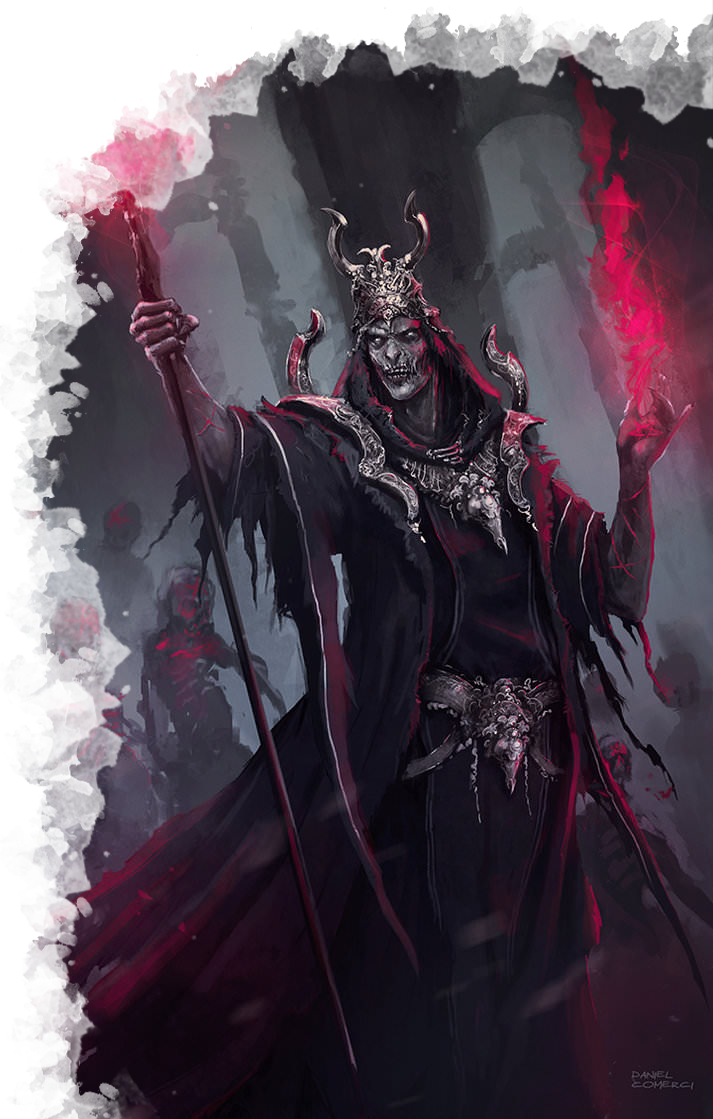
Art from Jason Nguyen
Doctrine of Bloodletting
If manipulating the life force is an art, the necromancers of the Doctriine of Bloodletting are gourmet. The necromancers of this doctrine learn that the true source of the essence is found in the blood flow, and they make the blood a symbol of worship. Many necromancers of this doctrine dream of becoming a vampire, in order to dedicate all their time to blood.
Bloodletting Doctrine Spells
| Necromancer Level | Spells |
|---|---|
| 3rd | arms of hadar, spider climb |
| 5th | vampiric touch |
| 7th | confusion |
| 9th | hold monster |
Blood Drinker
Beginning 3rd level, you discover that blood is the essence of all life, and you learn how to draw it. You gain the following benefits while you are unarmed:
- You can use Dexterity instead of Strength for the attack and damage rolls of your unarmed strikes.
- You can roll a d6 in place of the normal damage of your unarmed strike.
- On hit, the enemy must perform on a Constitution saving thrown against your spell save DC. On a failed save, you recover 1 spent vitality dice.
Unarmored Defense
Also starting at 3rd level, while you are wearing no armor and not wielding a shield, your AC equals 13 + your Dexterity modifier.
Blood Hunter
At 3rd level, your gain the ability to smell and track blood. You add your proficiency bonus on your Perception and Survival ability checks to track wounded creatures. If you are already proficient, you double your proficiency bonus.
Blood Magic
Beginning at 6th level, you learn how to improve your magic through blood and life. Whenever you cast an spell, you can spend 1 vitality point to improve its strength. Choose one of the following features to learn:
Distant Spell
When you cast a spell that has a range of 5 feet or greater, you can spend 1 vitality dice to double the range of the spell.
When you cast a spell that has a range of touch, you can spend 1 vitality point to make the range of the spell 30 feet.
Empowered Spell
When you roll damage for a spell, you can spend 1 vitality dice to reroll a number of the damage dice up to your Intelligence modifier (minimum of one). You must use the new rolls.
Extended Spell
When you cast a spell that has a duration of 1 minute or longer, you can spend 1 vitality dice to double its duration, to a maximum duration of 24 hours.
Blood Control
At 14th level, you acquire the ability to control the alive through their blood.
As an action, you attempt to dominate a creature you can see withing 30 feet of you. The target must succeed on a Constitution saving throw against your spell DC against your spell save DC or be controlled by you for 1 minute.
While the target is under your control, you can command it in the same way you do with your Undead Minions.
You can use your action to take total and precise control of the target. Until the end of your next turn, the creature takes only the actions you choose, and doesn’t do anything that you don’t allow it to do. During this time you can also cause the creature to use a reaction, but this requires you to use your own reaction as well.
Each time the target takes damage, it makes a new Constitution saving throw. If the saving throw succeeds, your control ends.
Once you use this feature, you can not use it again until you finish a long rest.
Vampirism
At 20th level, you have accomplished the greatest of your ambitions. You gain the following features:
- Your speed increases by 20 feet while you are not wearing armor or wielding a shield. Additionally, you gain the ability to move along vertical surfaces and across liquids on your turn without falling during the move.
- As a bonus action, you can spend one vitality dice and regain a number of hit points equal to the roll result, plus your Constitution modifier, plus your Intelligence modifier (minimum of one).
- When you take the attack action using your unarmed strikes, you can attack twice, instead of once.
- When you use your Raise Undead feature, you can create a vampire spawn instead. You can only have up to 2 vampire spawns at the same time.
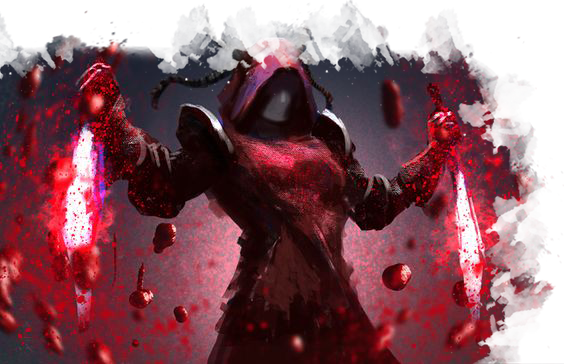
Art from Mac-Tire
Doctrine of Healing
Those necromancers who choose the Doctrine of Healing dedicate their lives to use their ability for good, or at least improve the health of themselves and those around them. This doctrine is characterized by its peaceful use. Necromancers of this doctrine often prefer mediation over violence, although some are not afraid of confrontation, since they remedy it.
Healing Doctrine Spells
| Necromancer Level | Spells |
|---|---|
| 3rd | healing word, prayer of healing |
| 5th | revivify |
| 7th | death ward |
| 9th | raise dead |
Life Giver
Beginning at 3rd level, your Vitality Infusion feature increases its range to 120 feet.
Additionally, whenever you use Vitality Infusion to heal a creature, you can target one additional creature. The creature must be within 30 feet of the other when you target it.
Natural Recovery
Also starting at 3rd level, you gain the ability to improve the natural healing of the body. When you take a short rest, choose up to 6 creatures within 60 feet of you. Whenever one of the targeted creatures roll a Hit Die to regain hit points, double the number of hit points it restores.
Improved Healer
Starting at 6th level, the Vitality Infusion you spend on others heal you as well. When you use your Vitality Infusion in a creature other than you, you regain 3 hit points for each spent die.
Vitality Aura
Starting at 10th level, you learn how to heal more creatures at the same time.
As an action, you choose any amount of creatures within 30-feet radius centered on you and heal them spending dice from the pool. The maximum number of dice you can spend at once is equal to your Intelligence modifier (minimum of one die). Roll the dice you spend, add them together, halve the result, and restore a number of hit points equal to the total.
Living Flesh
Affected patients suffer from horrible mutations in their bodies. On every day, the creature must take a DC 15 saving throw. On fail, the creature mutate in a random way, such as the skin color, number of fingers and teeth, length of an appendage, apparition of an extra eye or mouth, etc. This disease can not be cured through lesser restoration, because its not a common disease, but a life essence disorder. It is not contagious.
Life Proficiency
Beginning at 14th level, you learn a new way to manipulate life. Choose one of the following features to learn:
Panacea
As an action, you touches a creature restore its health. You remove all curses, diseases, and poisons affecting a creature that you touch. The creature also regains all its hit points.
Once you use this feature, you can not use it again until you finish a long rest.
Restore Life
As an action, you touches a corpse and return it to life. You cast the raise dead spell on a creature you touch, without expending a spell slot.
Return from Death
At 20th level, you master the shift between death and life. At any time after you die, you can replicate the effects of resurrection on yourself without consuming material components, provided your body has not been disintegrated.
Once you use this feature, you can not use it again for 7 days.
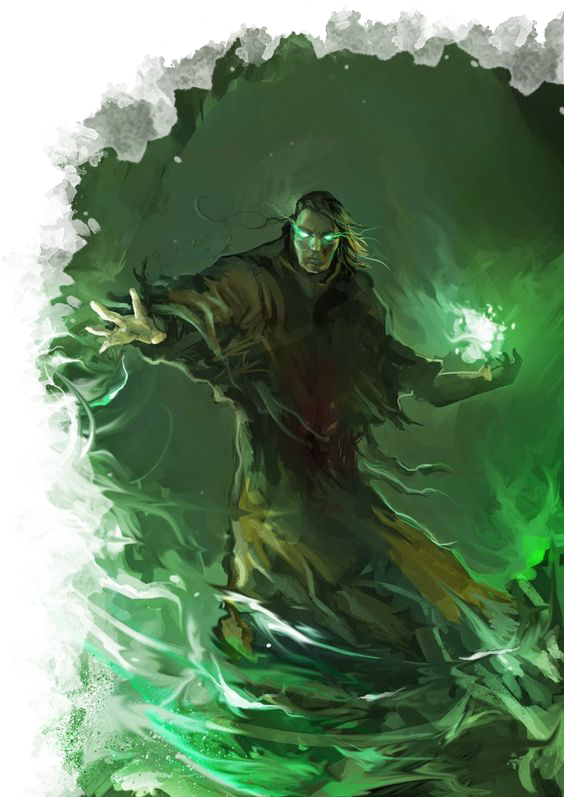
Art from
Outwar game
(EE) determines an spell from the Elemental Evil guide.
(XGtE) determines an spell from the Xanathar Guide To Everything.
Cantrips (0 Level)
- Acid Splash
- Blade Ward
- Chill Touch
- Dancing Light
- Frostbite (EE)
- Infestation (XGtE)
- Mage Hand
- Message
- Minor Illusion
- Mold Earth (XGtE)
- Poison Spray
- Ray of Frost
- Spare the Dying
- Thaumaturgy
- Toll the Dead (XGtE)
1st Level
- Bane
- Arms of Hadar
- Cause Fear (XGtE)
- Command
- Cure Wounds
- Detect Evil and Good
- Detect Poison and Disease
- Inflict Wounds
- Protection from Evil and Good
- Ray of Sickness
- Sleep
- Witch Bolt
2nd Level
- Aid
- Blindness/Deafness
- Blur
- Crown of Madness
- Darkness
- Gentle Repose
- Lesser Restoration
- Hold Person
- Invisibility
- Mirror Image
- Phantasmal Force
- Ray of Enfeeblement
- See Invisibility
- Shadow Blade (XGtE)
- Suggestion
3rd Level
- Animate Dead
- Bestow Curse
- Blink
- Dispel Magic
- Enemies Abound (XGtE)
- Fear
- Hunger of Hadar
- Hypnotic Pattern
- Remove Curse
- Revivify
- Speak With Dead
- Spirit Guardians
- Vampiric Touch
4th Level
- Aura of Life
- Banishment
- Blight
- Charm Monster (XGtE)
- Death Ward
- Locate Creature
- Phantasmal Killer
- Shadow of Moil (XGtE)
- Sickening Radiance (XGtE)
5th Level
- Antilife Shell
- Cloudkill
- Contagion
- Danse Macabre (XGtE)
- Enervation (XGtE)
- Greater Restoration
- Hallow
- Hold Monster
- Instect Plague
- Mass Cure Wounds
- Negative Energy Flood (XGtE)
- Raise Dead
6th Level
- Circle of Death
- Create Undead
- Disintegrate
- Harm
- Heal
- Magic Jar
- Soul Cage (XGtE)
7th Level
- Divine Word
- Etherealness
- Finger of Death
- Resurrection
- Symbol
- Power Word Pain (XGtE)
8th Level
- Abi-Dalzim’s Horrid Wilting (EE)
- Clone
- Dominate Monster
- Feeblemind
- Maddening Darkness (XGtE)
- Power Word Stun
9th Level
- Astral Projection
- Imprisonment
- Power Word Kill
- True Resurrection
Mortal Melody
A very rare and terrible disease. The mere contact with an infected creature requires a DC 20 Constitution saving throw. On success, the creature is immune to the disease. On fail, the creature is infected. After 24 hours the virus takes effect, crumbing to dust the body of the infected. The disease is so fast that victims can hear their skin crackle and their bones grow brittle, crack and break under their own weight. The victim has disadvantage on Attack Rolls, Ability Checks, and saving throws using Strength, Dexterity, or Constitution. Their movement speed is also reduced by half. There is no known cure. Tales says that the blood of an angel can revert this state.
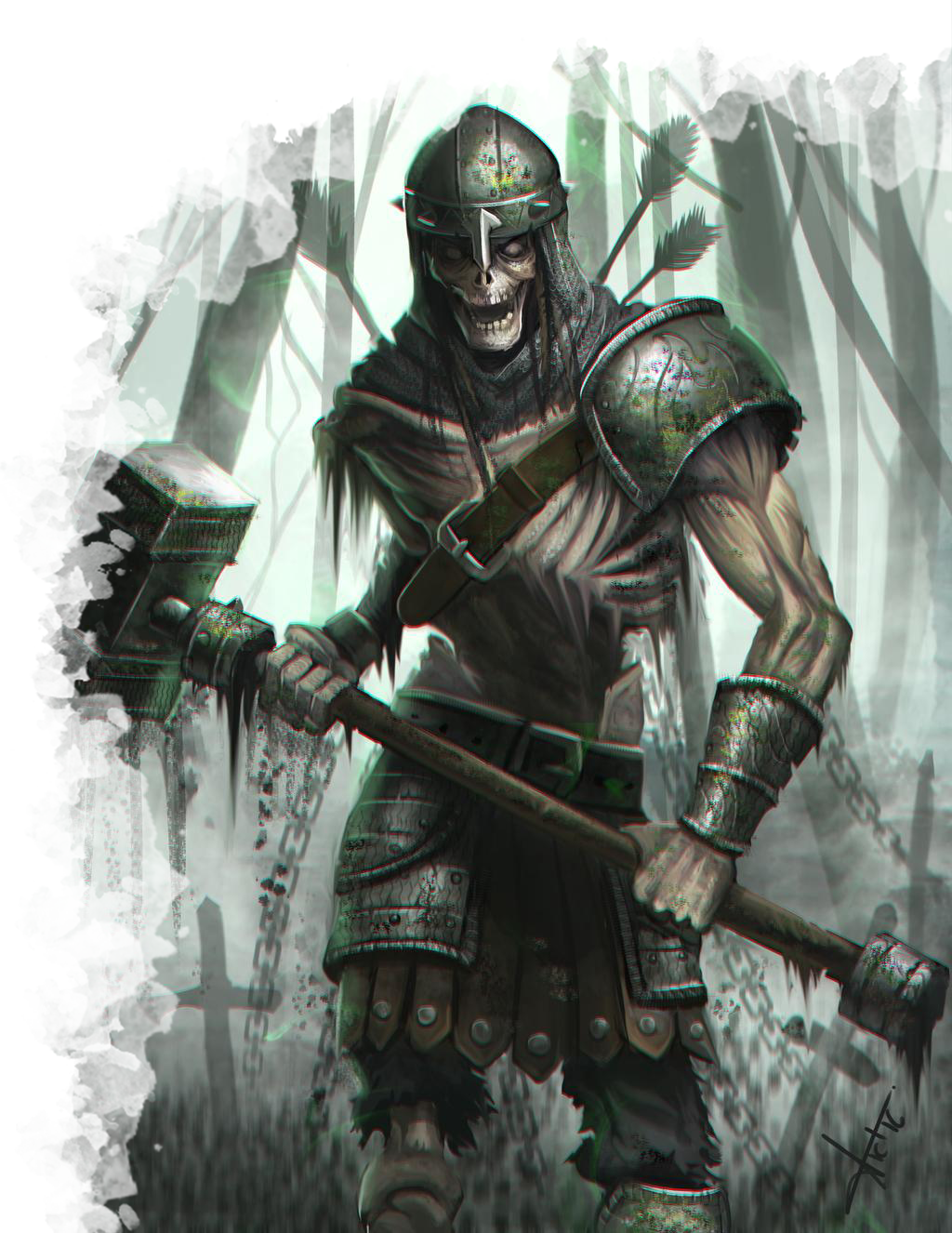
Art from
victter-le-fou
Xanathar's Guide to Everything
Additional Flavor and Subclasses
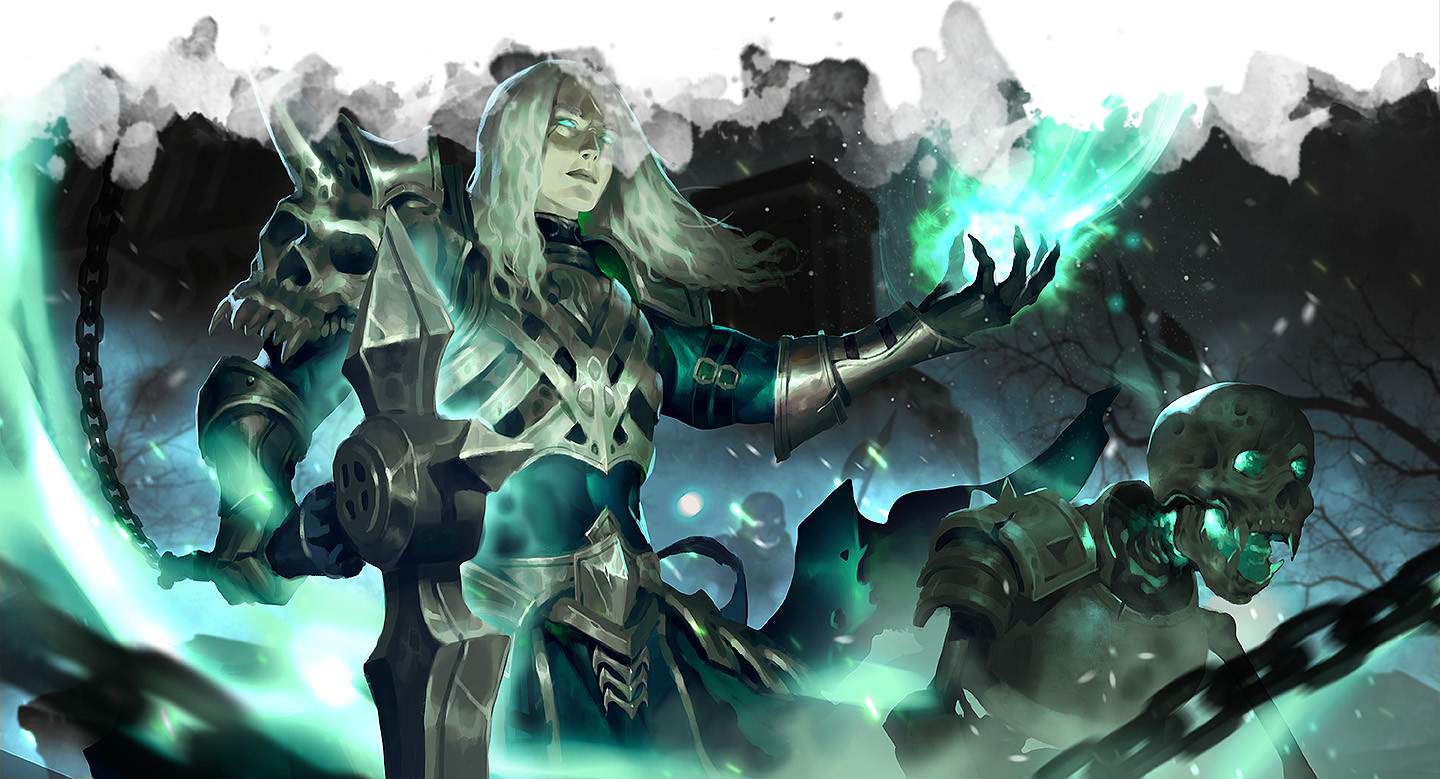
Art from Jiunn Kuo
Xanathar's Guide to Everything Flavor
Necromancer
NECROMANCY REQUIRES TALENT. THE SKILL TO manipulate the life essence is not something that everybody should do. Only those who inborn the gift has the privilege of play god.
- Larloch, the Shadow King
When it comes to fighting in times of need, necromancers have it easy compared to other characters. Their talent for manipulating the essence of life grants them a wide spectrum of defensive and offensive capabilities. Unlike other characters, they are never alone. Every necromancer is born with an aspiration that, together with his innate power, will come true someday.
Due to the idea of inappropriately breaking the boundary between life and death, raising the dead and burying the living, traveling with them does not sit well with many people. Despite this, many necromancers successfully overcome these prejudices by demonstrating how their abilities can be used for good.
Necromancers are often defined by events going on during their youth. For some of them, their only purpose is to recover someone who is no longer there, or to avoid this suffering to other people. These are well received by strangers. For others, the entire world is an acquired right, banished from society and hated by the folk, they consider themselves tyrants of death.
Playing a necromancer character can be as rewarding as it is challenging. The sections below offer suggestions on how to flesh out and personalize your person.
Necromancy Origin
Some necromancers understand where their power came from, based on how their abilities manifested. Others can only speculate, since their powers came to them in a way that suggest no particular cause.
Does your character know the source of your unique talent? Does it tie back to some distant relative, a near-death experience, or a satanic ritual? If your necromancer doesn't know where their power arose from, your DM can use this table (or select an origin) and reveal it to you when the information plays a role in the campaign.
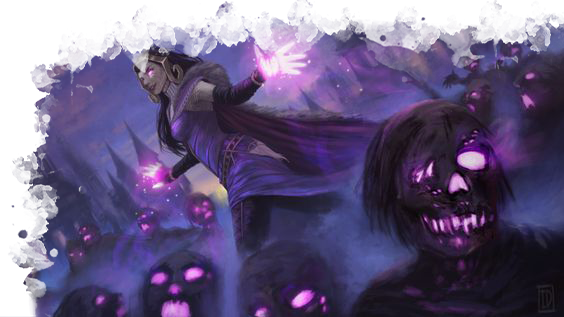
Art from
Lilianavess
Necromancy Origins
| d6 | Origin |
|---|---|
| 1 | You almost die one day, and you discovered that death was not the end, but the beginning. |
| 2 | Your power arises from your family's bloodline. You are related to some powerful creature, or you inherited a blessing or a curse. |
| 3 | You belonged to a demon-worshipping cult, where you learned to manipulate the life essence as part of the satanic rituals. |
| 4 | You remember exactly how you died. But somehow, you didn't die at all. |
| 5 | You meet another necromancer one day, which cursed your (or blessed) with this skill. |
| 6 | You experienced the death of many persons around you. And somehow it broaden your sight to a new realm. |
First Usage
The first time a necromancer defy the natural course of life is an experience that will mark him or her for its entire life. When your necromancer's power appeared, what was the first thing you did? How did you face this power?
First Usages
| d6 | First Usage |
|---|---|
| 1 | Your beloved one died and you were not able to save it. Your desire of bring it back was so strong that you raise it as an undead, accidentally or intentionally. |
| 2 | You found a death animal in the forest and bring it back to life, it's now your pet. |
| 3 | Something in you was different and no one understood it. You killed your best friend and turned it. |
| 4 | Everything you touches withered, soon your discovered this power. |
| 5 | A friend of your almost die from a wound or disease, but you healed him with this power. |
| 6 | A group of goblins attacked the place where you lived, but you managed to scare them with undeads. |
Desire
Few necromancers assume this power without a personal goal in mind. Many necromancers use their power as a tool to change an outcome to their advantage, be it for the good of others or just theirs. For others, necromancy is a tool with which they try to overcome a fear or trauma that they acquired in their youth. For them, necromancy is very important, it can't be taken lightly.
Beyond the obvious reasons, why is your necromancer practicing necromancy, and what is he trying to achieve? If you have not given much thought to these questions, you can do so now, and the answers you find are very likely to affect how your future unfolds.
Desires
| d6 | Desire |
|---|---|
| 1 | You can't bear the fact that everything has an end. You will do anything in your power to overcome this limitation. |
| 2 | You can't stand the department that those you love. Your greatest wish is to meet them in this world, and not in the next. |
| 3 | You are going to become the greatest necromancer the world has seen in generations. |
| 4 | You are going to show people that death is only the beginning. |
| 5 | If you can fully understand life and death, you can discover how to use it to avoid suffering in the world. |
| 6 | You are going to show those who hurt in the past you what the real suffering is. |
Reaction
When a new necromancer discovers his power, the consequences of this event depend largely on how the first witnesses who see his power react to what they have just witnessed.
When your necromancer powers show up and show them to the world around you, how do they respond? Were other people supportive, fearful, or somewhere in between?
Reactions
| d6 | Reaction |
|---|---|
| 1 | Your power was seen as a curse that only brings pain and suffering. People hate or fear you, and on some occasion they have tried to kill you. |
| 2 | Your power has been seen as a blessing to those around you, and they hope you will use them to serve your community. |
| 3 | Your power caught the attention of a sinister cult that plans to exploit your abilities. |
| 4 | At first people adore and praise you, but you soon discover that they are actually envious and expect things from you. |
| 5 | Your neighbors hate you and fear your power, causing them to walk away from you. |
| 6 | People believe that your power is the result of dark and sinister experiments. |
Personal Decisions
For the Personal Decision section in the Xanathar's Guide to Everything, we add the following Class Training table:
Necromancer
| d6 | I become a necromancer because... |
|---|---|
| 1 | I suffered a terrible emotional or physical strain, which brought forth my latent talent. I have trained to master it ever since. |
| 2 | When a monster killed one of my friends, I became filled with fear. My friend raised as an undead and fought with the creature as I escape. |
| 3 | Sensing something special in me, a stranger taught me how to control my gift. |
| 4 | When I was born, all the pets of my house died or all my family got sick for a week. My family is convinced that this event was a curse that I will have to face someday. |
| 5 | After I recovered from a serious disease, I realized that thought I was cured, I was not unchanged. I began to exhibit unusual abilities that I am just beginning to understand. |
| 6 | My house was near the local graveyard, and I spent too much time there, until it was too late. |
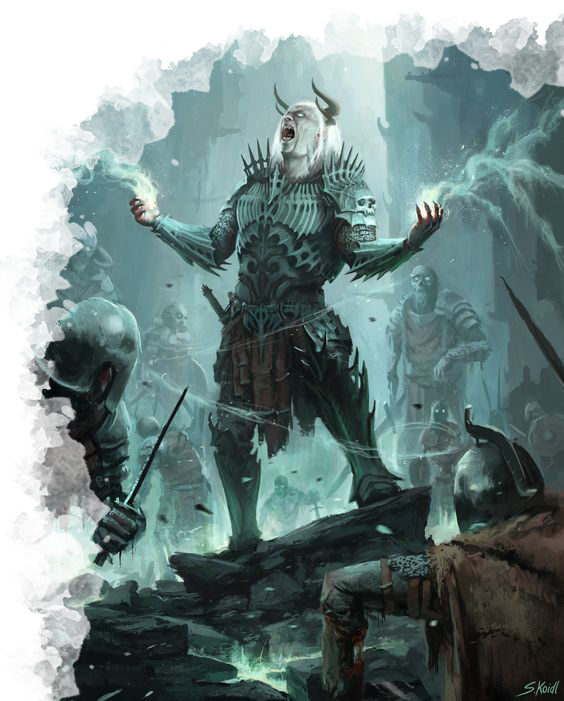
Art from Stefan Koidl
Necromancy Doctrines
At 3rd level, a necromancer gains the Necromancy Doctrine feature. The following doctrine options are available to a necromancer in addition to those offered in the main section: Doctrine of the Reaper, Doctrine of Shamanism and Doctrine of the Occult.
Doctrine of the Reaper
Contrary to other doctrines, in the Doctrine of the Reaper death is accepted as the final destination of all that lives. This doctrine is known for the characteristic use of the scythe, a weapon that reaps life. Its necromancers are dark creatures that only await their death and of those around them. Over time, their wills and bodies vanish on the death spiral, until not even their bones remain.
The reapers' acts are not evil, for they are no longer able to distinguish between good and evil. For the reapers, death is an inevitable state, something we all have in common.
Reaper Doctrine Spells
| Necromancer Level | Spell |
|---|---|
| 3rd | shield, blur |
| 5th | haste |
| 7th | phantasmal killer |
| 9th | steel wind strike |
Reaper's Weapon
At 3rd level, you gain proficiency with light armor and scythe. When you attack with a scythe, you can use your Intelligence modifier, instead of Strength modifier, for the attack and damage rolls. Additionally, you can use this weapon as a spellcasting focus for your necromancer spells.
New Martial Weapon
Weapon Cost Damage Weight Propierties Scythe 25gp 1d10 slashing 5 lb Heavy, reach, two-handed
Dreadful Strike
Starting at 3rd, you can infuse fear in your victims. When you hit a creature with a melee weapon attack, you can choose to frighten the creature. The target must succeed a Wisdom saving throw against your spell save DC or be frightened of you until the end of your next turn.
You can use this ability a number of times equal to your Intelligence modifier (minimum of once). You regain all expended uses when you finish a long rest.
Lethal Strike
At 6th level, your attacks are imbued with negative energy. Once per turn, when you hit a creature with a melee weapon attack, you can also deal 1d8 necrotic damage and gain a number of temporary hit points equal to that amount. This damage increases to 1d10 at 10th and 1d12 at 14th level.
In addition, you have advantage on melee weapon attacks against creatures frightened of you.
Dark Pact
Beginning at 10th level, you have mastered the art of fighting with your Undead Minions.
You gain one of the following features of your choice.
Dislocation
Whenever you are the target of an attack, after the die is rolled, but before the DM declares whether the hit was successful, you can, as a reaction swap places with one of your Undead Minions of your choice- potentially having the new creature take the attack instead.
Once you use this feature, you can't use it again until you finish a short or long rest.
Disruption
Whenever you hit a creature with a melee weapon attack, you can use your bonus action to make all your Undead Minions of your choice within 5 feet of the target make a single weapon attack against the creature as a reaction.
Once you use this feature, you can't use it again until you finish a short or long rest.
Etherealness
At 14th level, you learn how to become ethereal. As a bonus action, you can expend 1 vitality die and cast the Etherealness spell, without expending a spell slot, but the spell ends at the end of the current turn.
Spectre
At 20th level, you have abandoned you physical form to become a spectre, a creature of pure magic. You gain the following benefits:
- You gain resistance to bludgeoning, piercing and slashing damage from non-magical weapons.
- You can attack twice, instead of once, whenever you take the attack action.
- You gain a flying speed of 60 feet.
- You become immune to the following conditions: charmed, exhaustion, frightened, grappled, paralyzed, petrified, poisoned, prone and restrained.
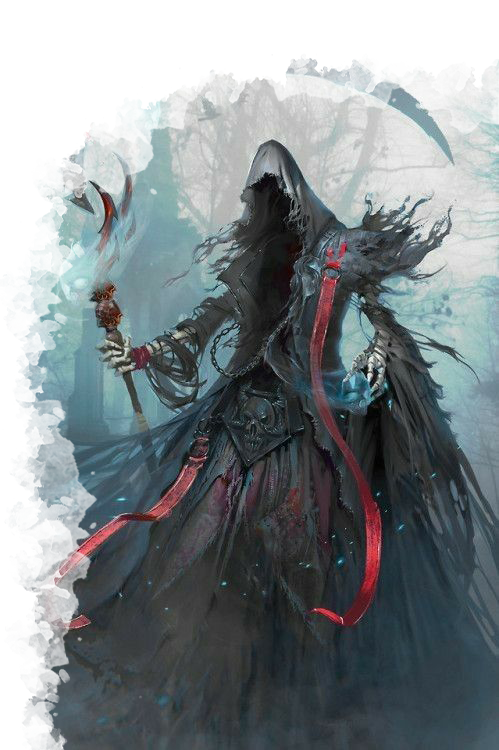
Unknown author
Doctrine of Shamanism
The doctrine of shamanism is characterized not by domination over death, but by communication with the afterlife. Its necromancers use the power of death to establish connections with the supernatural world of the spirits.
Some necromancers use this power to evoke spirit guides, omens, or messengers. Others use this magic for divination or scrying, throwing bones or runes. Finally, some of them use the power of malevolent spirits to cause diseases and curses.
Shamanism Doctrine Spells
| Necromancer Level | Spells |
|---|---|
| 3rd | healing word, augury |
| 5th | spirit guardians |
| 7th | conjure woodland beings |
| 9th | contact other plane |
Sixth Sense
At 2th level, you gain an uncanny sense of when things nearby are not as they should be, giving you an edge when you dodge away from danger.
You have advantage on Dexterity saving throws against effects that you can see, such as traps and spells. To gain this benefit, you can’t be blinded, deafened, or incapacitated.
Whispers of Danger
Beginning at 6nd level, the spirits warn you of danger. Before you make a saving throw, you can choose to gain advantage on the roll, providing you don't have disadvantage on it.
You can use this feature a number of times equal to your intelligence modifier (minimum of one charge). When you finish a long rest, you regain all expended uses.
Spirits Totem
Beginning at 10th level, you gain the favor of the spirits.
As an action, you can summon helping spirits. Choose a point within 60 feet from you. During a minute, the spirits will help you with their power, each spirit having a different effect.
Once you use this feature, you can't use it again until you finish a long rest.
Choose one of the following features to learn:
Healing Spirits
At the beginning of each of your turns, the creature with lowest amount of hit points within 30 feet from that point restores 1d8 + half your necromancer level in hit points.
Vengeful Spirits
At the beginning of each of your turns, a random creature must make a Charisma saving throw with your spell save DC. On fail the creature takes 1d8 + half your necromancer level in psychic damage. The spirits has preference over creatures which hurt or threaten you in the last turn.
Summon Spirits
At 14th level, you can ask for the aid of an spirit.
As an action, you call forth an spirit. Choose banshee or ghost. The creature you chose appears in an unoccupied space within 10 feet of you. The creature is friendly to you and your companions for the duration.
Roll initiative for the creature, which has its own turns. It obeys any verbal commands that you issue to it (no action required by you). If you don’t issue any commands to the elemental, it defends itself from hostile creatures but otherwise takes no actions.
After 1 minute, the creature return to the realm of the spirits.
Once you use this feature, you can't use it again until you finish a long rest.
Spiritual Sight
At 20th level, you can perceive both the physical and spiritual plane in perfect sync. You gain 120 feet of truesight.
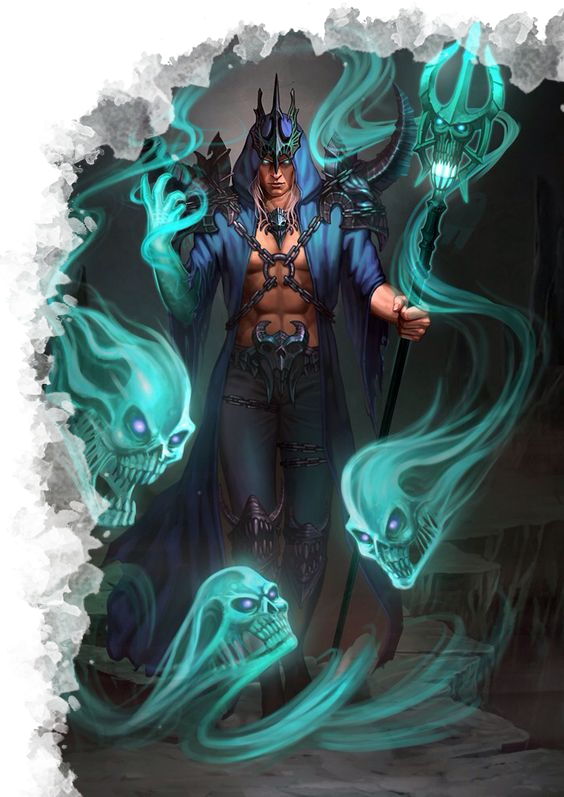
Unknown author
Dreadful Whispers
This curse is obtained by angering spirits. Affected creatures say to hear whispers and incantations from spirits. At the beginning of every day, the creature must succeed a DC 20 Wisdom saving throw. On fail the creature is affected by a long-term madness from the DMG.
Doctrine of the Occult
The Doctrine of the Occult considers necromancy as an occult science, and they have become the maximum exponents of research. Its necromancers are well known for their profound and dire investigations into the world of the dead.
For them death is nothing more than a mystery that must be unraveled. Using their skills and knowledge about the essence of life, the participants of this doctrine seek to unveil its mysteries and unlock its power.
Occult Doctrine Spells
| Necromancer Level | Spells |
|---|---|
| 3rd | unseen servant, augury |
| 5th | speak with dead |
| 7th | mordenkainen's private sanctum |
| 9th | mislead |
Occult Sage
At 3rd level, you are used to academic research. You become proficient in your choice of two of the following skills: Arcana, History, Nature, or Religion.
Your proficiency bonus is doubled for any ability check you make that uses either of those skills.
Occult Researcher
At 3rd level, you craft a book where you write down all your knowledge about death. This boook is called a Book of Death.
When you gain this feature you can now inscribe magical rituals in your Book of Death. Choose two 1st-level and one 2nd-level spells that have the ritual tag from any class’s spell list (the three needn’t be from the same list). The spells appear in the book and don’t count against the number of spells you know. With your Book of Death in hand, you can cast the chosen spells as rituals. You can’t cast the spells except as rituals, unless you’ve learned them by some other means. You can also cast a necromancy spell you know as a ritual if it has the ritual tag.
On your adventures, you can add other ritual spells to your Book of Death. When you find such a spell, you can add it to the book if the spell’s level is equal to or less than half your necromancer level (rounded up) and if you can spare the time to transcribe the spell. For each level of the spell, the transcription process takes 2 hours and costs 50 gp for the rare inks needed to inscribe it.
If you lose your Book of Death, you can perform a 1-hour ceremony to write a replacement. This activity can be performed during a short or long rest, and it destroys the previous book. The book turns to ash when you die.
Death Quimera
Beginning at 6th level, you learn how to craft a creature from the death of others.
As an action, you choose a point within 60 feet from you. Choose any amount of undead creatures under your controls in a 30-foot-radius sphere centered on that point. Each target is pulled toward the center of the sphere and merged into a powerful golem made of rotten flesh and bones.
The target creatures disappear and a death golem is created. The current and maximum hit points of the creature are equal to the sum of hit points of all the targeted creatures. The creature statistic are at the end of the subclass description.
For 1 minute or until your concentration ends (as if you were concentrating on a spell) you command this golem in the same way you do with your Undead Minions. After the duration or when the golem die, the golem break into pieces, as its binding energy banishes, filling the ground with flesh and bones. The undead creatures consumed by the golem start reappearing after 1d4 minutes, as their animating magic returns to them. If the golem had less than half of its hit points, only half of the creatures reappear, chosen randomly with a die. On 0 hit points, no creature reappear.
Once you use this feature, you can not use it again until you finish a long rest.
Enhanced Quimera
At 10th level, you learn how to improve the your death golem.
You gain one of the following features of your choice.
Necrotic Infusion
Whenever the golem hits a creature with a weapon attack, the creature takes an extra 1d8 necrotic damage.
Harden Bones
The creature armor class increases by 3.
Predatory Instinct
The creature movement speed increases by 10ft. Additionally, it gains climbing and swimming speed equal to its walking speed.
Vitality Binding
At 14th level, you learn how to effectively heal your golem.
Whenever you use your Vitality Infusion to target the death golem, you do not roll the spent dices. You instead use the highest number possible for each die.
Perfect Chimera
At 20th level, you mastered the science used behind your Death Chimera feature. Choose an additional enhance from the Enhanced Chimera feature.
Additionally, you learned how to maintain your chimera indefinitely. You cannot use your Death Chimera feature if you already have a death golem under your control.
Rigor Vitalis
It is suspected that this disease may be contracted due to being subjected to spells from the school of necromancy.
Affected creatures gain disadvantage on any Dexterity saving throw and Dexterity checks, as they joints and flesh loose mobility.
At 3rd day, patients become unable to move, speak and eat. As they can no longer move muscles willingly.
At 5th day, the afflicted creature no longer breath, and their heart no longer beat.
The only known cure is a silver mushroom from the Feywild.
Death Golem
Large construct, neutral
- Armor Class 12
- Hit Points The sum of HP of all consumed creatures
- Speed 25ft.
STR DEX CON INT WIS CHA 19 (+4) 9 (-1) 18 (+4) 6 (-3) 10 (+0) 5 (-3)
- Saving Throws Con +6, Str + 6
- Skills Athletics +6
- Damage Vulnerabilities fire
- Damage Resistances lighting, poison, psychic
- Damage Immunities necrotic
- Condition Immunities charmed, exhaustion, frightened, poisoned
- Senses Darkvision 60 Ft., passive Perception 10
- Languages Understands The Languages Of Its Creator But Can't Speak
Aversion of Fire. If the golem takes fire damage, it has disadvantage on attack rolls and ability checks until the end of its next turn.
Constructed Nature. A golem doesn't require air, food, drink, or sleep.
Immutable Form. The golem is immune to any spell or effect that would alter its form.
Necrotic Absorption. Whenever the golem is subjected to necrotic damage, it takes no damage and instead regains a number of hp equal to the necrotic damage dealt.
Undead Fortitude. If damage reduces the golem to 0 hit points, it must make a Constitution saving throw with a DC of 5+the damage taken, unless the damage is radiant or from a critical hit. On a success, the golem drops to 1 hit point instead.
Actions
Multiattack. The golem makes one slam attack and one bite, or one slam attack and a bone shard attack.
Bite. Melee Weapon: Attack +4 to hit, reach 5ft, one target. Hit: 14 (3d6 + 4) piercing damage. The golem regains hit points equal to damage produced.
Slam. Melee Weapon: Attack +6 to hit, reach 5ft, one target. Hit: 17 (3d8 + 4) bludgeoning damage.
Bone Shard. Ranged Weapon: Attaack +6 to hit, range 60/120 ft. one target. Hit: 11 (2d6 + 4) piercing damage.
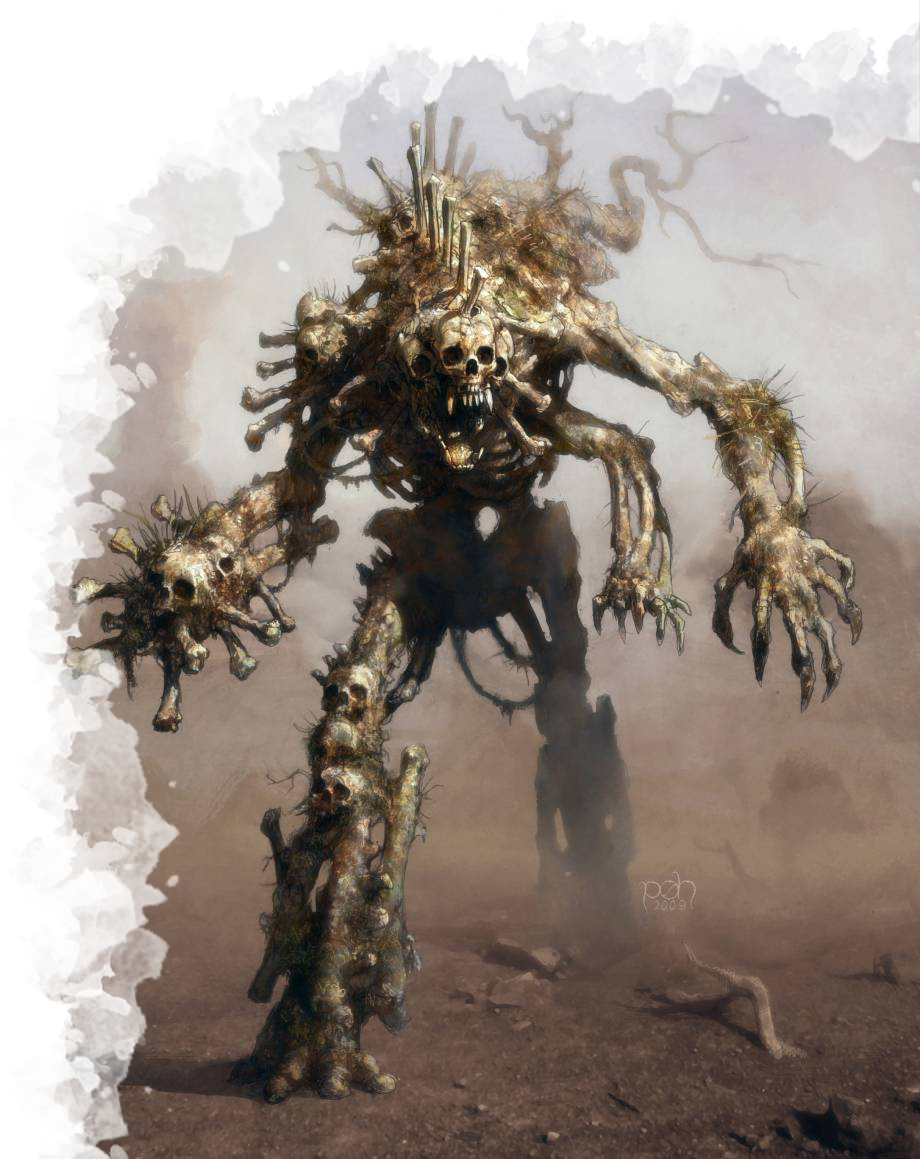
Art from game Age of Conan: Unchained
(Per Oyvind Haagensen)
Changelog
Last Revision: 4/5/20
Changelog:
- 4/5/20: Initial Release.